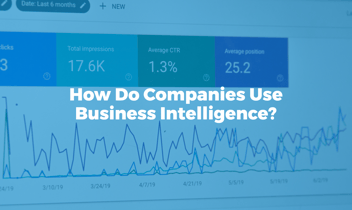Cities have access to lots of data with potential to transform tourism. But they need the right big data technologies to make the potential a reality.
Last month, the United Nations World Tourism Organization (WTO) met in Manilla, the Philippines, for the International Conference on Tourism Statistics. At the conference, a key issue raised was how cities can use big data to better manage tourism.
Tourism is big business; the World Tourism Organization estimates that it makes up about 10% of world GDP and creates one in every 11 jobs. It’s also an industry on the rise, with huge future potential for global wealth and employment.
Cities have an incredible wealth of information at their disposal that has the potential to transform the world of tourism. However, simply having information isn’t enough to be able to use it effectively. Cities and tourism players also need access to tools that will enable them to draw actionable conclusions from the data. Many of these conclusions will help them to benefit not just visitors, but also local residents, too.
 What kind of tourism data are cities collecting?
What kind of tourism data are cities collecting?
Many cities around the world are already using big data technologies to help them better manage tourism. This data allows them to both assess traditional indicators (like the direct GDP generated by tourism) and incorporate new measures that are only possible due to big data analysis.
Data gathered in a 2014 study of Spanish tourism using big data from a wide array of sources resulted in information about things like visitors’ country of origin, how long they stayed for, which areas tourists preferred to stay in, which visitors preferred to go to Madrid versus Barcelona, and how much they spent.
In another study, trends in U.S. tourism showed that it was particularly useful to be able to get data about visitors’ points of entry, their countries of origin, and whether they were traveling for business or pleasure. This data can be used to hone in on where their key markets really are, rather than making a prediction.
How can the tourism industry benefit from big data?
Tourism boards and companies in the tourism sector can benefit from data of this type in many ways. That includes pinpointing marketing campaigns, offering packages tailored to visitors' likely interests, and deciding which countries to focus on winning customers in.
These insights can be a great help in the decision-making process, and improve how the tourism industry operates. Players in the tourism industry can now make informed decisions on the basis of analytics and number-driven data. They can identify targeted groups of potential customers at every stage in the trip planning process. They can also increase efficiency and the quality of services. Big data can even be used to predict which new products might work well in their market.
For tourists, big data technologies used effectively can translate to personalized offers tailored to their interests and needs. They can receive improved experiences that are focused on the customers and their needs. Big data can be used not just as predictive tool to forecast future trends, but also in real time to anticipate and respond to tourists’ needs nearly immediately.
This year’s UN Conference on Tourism Statistics also focused on how to measure and create more sustainable tourism, which is in the interest of both providers and consumers.
 What do we still need to improve?
What do we still need to improve?
Many of issues with big data in general apply to the tourism sector. One of these is the difficulty of sharing information across sources. Though cities have no shortage of information, it’s often spread out across multiple organizations that don't combine data clusters.
On top of that, organizations often don’t have a standard way of collecting data. This prevents it from being used to its full potential. Fortunately, the UN’s WTO is already working on creating a standard statistical framework to deal with this issue.
Also, many cities aren’t quite sure what to do with big data. A July 2017 report by Skift calls big data in tourism “a work in progress”, pointing out that “too often that data - even when available - doesn’t trickle down to local city and neighborhood decision makers.”
Part of that issue may be because the information is often too complex and unwieldy to be easily understood. The data insights can’t be put into plans of action. Easy visualization is key.
For consumers, big data must focus on their experience without making it too invasive, according to the World Travel and Tourism Council’s report on big data and tourism. Protecting consumer privacy is essential.
The future of big data and tourism
Imagine touching down in a new city you’ve never been to before. As soon as you arrive, you have an assistant who knows all about how to get around the city. They’ve also created a plan for you that’s 100% tailored to your tastes, budget, and time. They can even give you suggestions for what to do based on your current mood.
Or perhaps you’re a tourism board. You instantly access information about how long people spend waiting in line and moving from one point to another. You can also find out what people are spending their money on, where they’re staying, where they’re going, and even how satisfied they are with their trip. You’ll get real-time suggestions to solve questions like how much to charge and who to market your products to.
This is not the future. These are all real things that can be done right now (and are also all solutions we offer at Bismart).
What we can expect from the future is that cities and tourism players will increasingly use big data to their advantage. This will truly revolutionize what cities offer visitors and residents alike. With initiatives around the globe, intelligent travel is the way of the future for tourism.
 Are you interested in seeing how your data can come to life? See our list of tourism products and feel free to contact us to find out how our solutions can help you.
Are you interested in seeing how your data can come to life? See our list of tourism products and feel free to contact us to find out how our solutions can help you.



